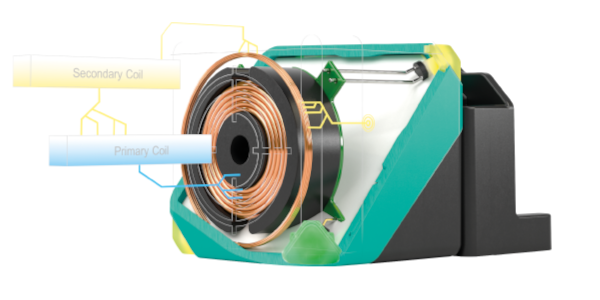Pepperl+Fuchs equips its VariKont series with Active Shielding Technology enabling high switching distances

Inductive sensors are still the first choice for detecting metallic objects. However, conventional inductive proximity sensors have one thing in common: if the distance to the damping element increases, the sensor becomes more sensitive to the detection object, and the metal surrounding the installation affects the switching distance. Active Shielding Technology from Pepperl+Fuchs solves this very problem. Integrated into the VariKont series for the first time, the new technology enables high switching distances—regardless of the installation conditions. This simplifies equipment design and saves time and money!
Sophisticated Technology for More Flexibility
The installation conditions and surrounding material can influence a proximity sensor’s electromagnetic field. The sensor is pre-damped by the installation, thus changing the switching distance—and with it the measurement result. To compensate for these external factors, Pepperl+Fuchs has developed a new technology and has integrated it into the VariKont series for the first time. Inductive sensors with Active Shielding Technology actively detect the installation situation and maintain a constant switching distance, no matter the installation situation and the surrounding material. They are available in versions with high switching distances of 30 mm for flush mounting and 50 mm for non-flush mounting. Both models are easy to install and allow long distances to the detection object. Their adjustable sensor head is equipped with corner LEDs that are visible from any perspective. This enables status checks to be carried out from every angle, regardless of the installation conditions.
Additional Coil Compensates for Environmental Influences
To keep the switching distances high, an additional coil was integrated into the VariKont and VariKont L2 sensors. As with conventional inductive proximity sensors, the primary coil is responsible for detecting the damping element. Meanwhile, the new secondary coil measures the sensor environment, including the installation conditions and surrounding material. The information obtained is used to ensure direct compensation for environmental influences. This simplifies system planning and optimizes use of mechanical tolerances.
For more information, please visit http://www.pepperl-fuchs.com.
News Categories
- » NEWS HOME
- » Automation & Robotics
- » Industry 4.0
- » Material Handling
- » Sensors
- » Quality & Testing
- » Machine Vision
- » Laser & Optics
- » Metalworking
- » Motion Control & Drives
- » Hydraulics & Pneumatics
- » Process Industry
- » Renewable Energy
- » Agriculture
- » Home & Office Furniture
- » Environmental Tech

